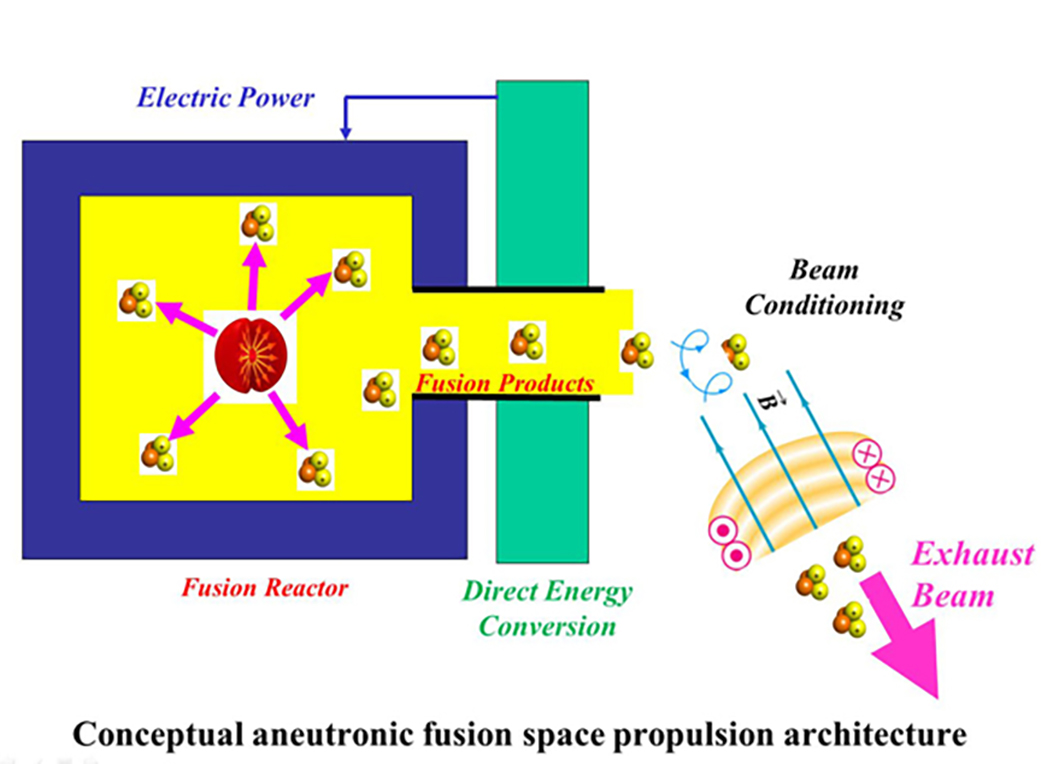Alfonso Tarditi
University of Houston at Clear Lake
NIAC 2011 Phase I Tarditti Aneutronic Fusion Spacecraft Architecture Final Report
The object of this proposal is to conduct a feasibility study for a novel, fusion-powered, space propulsion architecture that can ultimately change drastically the potential for human and robotic space exploration. The proposed design is based on neutron-free nuclear fusion as the primary energy source. An innovative beam conditioning/nozzle concept enables useful propulsive thrust directly from the fusion products, while some fraction of the energy is extracted via direct conversion into electricity for use in the reactor and spacecraft systems.
This study focuses on providing the framework required to make fusion propulsion an appealing proposition for long-range space travel (by integrating the power generation and propulsion systems) rather than on the development of a specific fusion reactor concept. However, the scope of this study is not constrained by the immediate availability of fusion energy since it also analyzes “hybrid” schemes with a solar or fission primary energy source along with a sub-critical fusion reactor used as a plasma space propulsion system.

































